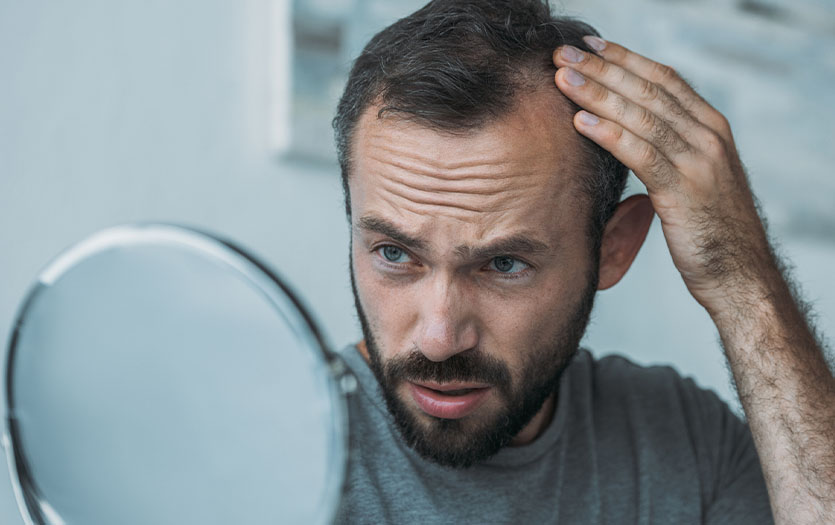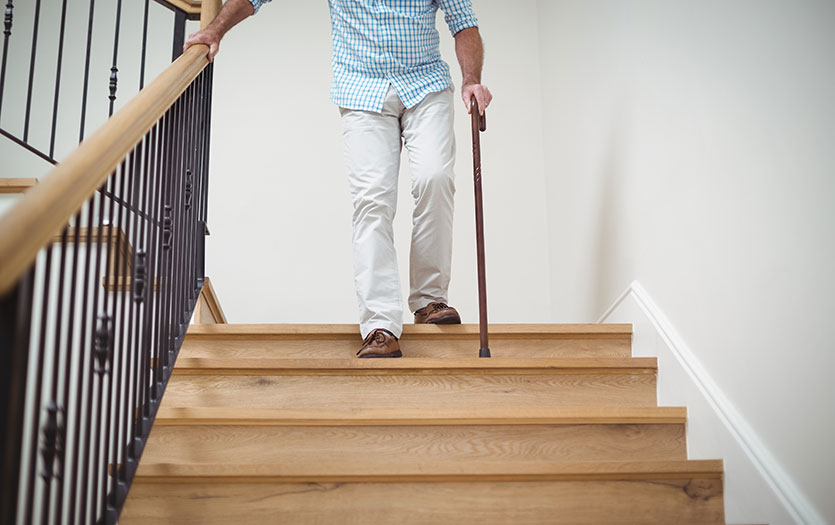
Self-confidence, which is often linked to our outer appearance, is vital in all areas of life, from personal relationships to professional interactions. We all want to look and feel our best, and for many, that includes having a healthy, full head of hair. However, when abnormal shedding or hair loss begins, it can quickly impact self-esteem. Below, we'll take a closer look at the different types of hair loss, common causes and a few options for addressing it.
What is hair loss?
While most people naturally shed up to 100 hairs a day, more significant hair loss may raise concerns. Hair loss (alopecia) typically refers to hair that is thinning or falling out from the scalp, though it can also occur on other parts of the body.
Types
In most cases, individuals inherit hair loss from one or both parents. This condition, known as androgenetic alopecia (male/female pattern baldness), occurs when the follicles shrink over time, producing thinner and weaker strands. As this cycle repeats, new hair growth slows, eventually leading to bald spots or thinning.
Additional forms of hair loss may include:
-
Alopecia areata, an autoimmune condition, occurs when the body mistakenly attacks the follicles, causing hair to fall out in isolated areas.
-
Telogen effluvium is a temporary hair loss triggered by stress, illness, poor nutrition, certain medicines or hormone changes.
-
Trichotillomania is an impulsive disorder in which a person feels an uncontrollable urge to pull or twist hair from the scalp, eyelashes or eyebrows.
-
Traction alopecia results from constant tension or pulling on the hair roots, especially around the hairline. Restrictive hairstyles, like braids, ponytails or buns, and friction from hats or helmets contribute to this type of hair loss.
Causes
Various factors, such as genetics, lifestyle and certain diseases, can lead to hair loss. Additionally, some medications and medical treatments may cause it as a side effect.
Common causes of hair loss include:
-
Age
-
Stress, including physical stress from childbirth, surgery, illness or high fever
-
Not getting enough protein or iron from the foods you eat
-
Cancer treatment, including chemotherapy and radiation
-
Thyroid diseases, such as hypothyroidism and hyperthyroidism
-
Ringworm of the scalp, which is common in children
-
Medicines, such as anticoagulants, cholesterol-lowering drugs or hormones
-
Damage to the hair from pulling it back too tightly, wearing tight braids or ponytails, or using curling irons or dyes
How is hair loss diagnosed?
Androgenetic alopecia is often easy to recognize. Men typically lose hair from the forehead and top of the head, creating an "M" or "U" shape pattern. In women, it's more common to see thinning on the top of the scalp, but not usually in their hairline.
When the cause of hair loss is less evident, your doctor may ask questions about your health history and perform a physical exam. This can include looking closely at the scalp and hair loss pattern, collecting a hair sample or ordering blood work.
How is hair loss treated?
When hair loss is inherited, treatments can help some hair grow back and prevent more from falling out, but complete restoration is not guaranteed.
Some people choose to treat hair loss with:
-
Medication: Topical treatments such as minoxidil (Rogaine®) are available over the counter, while finasteride and spironolactone require a prescription.
-
Surgery: Hair transplants and procedures such as scalp reduction and scalp flaps work by redistributing existing hair to cover bald areas.
-
Temporary solutions: Some people manage their hair loss with thickening sprays or powders to conceal the scalp. Others may choose a new hairstyle or supplement it with a hairpiece, extensions, wig or toupee.
If a disease, medicine or stress is causing hair loss, addressing the underlying condition is usually the most effective solution. For example, if an underactive thyroid is causing the problem, taking thyroid medicine may help. Most hair lost during chemotherapy will grow back after the treatment ends.
When alopecia areata is the reason for hair loss, medicines such as corticosteroids can help manage the condition, although hair often regrows naturally within a year. Understanding the come-and-go nature of hair loss with this condition can help you make the best treatment decision.
Final thoughts
While some individuals choose to pursue hair restoration therapies, others embrace their thinning or baldness. Ultimately, the choice is yours.
When you are deciding about treatment, consider these questions:
-
Which one is most likely to work?
-
How long will it take?
-
Will it last?
-
What are the side effects and other risks?
-
How much will it cost? And will insurance cover it?
If you are concerned about hair loss, reach out to your primary care provider. They can help assess the situation and provide guidance toward the best solution for your needs.
Copyrighted material adapted with permission from Healthwise, Incorporated. This information does not replace the advice of a doctor.



